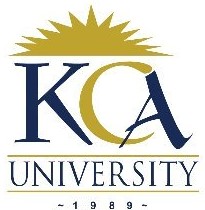
UNIVERSITY EXAMINATIONS: 2018/2019
EXAMINATION FOR THE DEGREE OF BACHELOR OF SCIENCE IN
INFORMATION TECHNOLOGY
BCT2304 NETWORK INSTALLATION AND MAINTENANCE
FULL TIME/PART TIME/DISTANCE LEARNING
DATE: DECEMBER, 2018 TIME: 2 HOURS
INSTRUCTIONS: Answer Question One & ANY OTHER TWO questions.
Question One Total Mark – 30 Compulsory
(a) Explain how a Virtual Private Network is implemented. [4 Marks]
(b) (i) What are the functions of the Transport and Network Layers of the OSI Model? [4 Marks]
(ii) There are three (3) types of domains that a network administrator should worry about namely
collision, broadcast and bandwith. Briefly explain what each of these domains are and which
devices addresses them. [9 Marks]
(c) Routers within the networks of large organisations often learn about connectivity using linkstate protocols. Describe the general behaviour of link-state protocols. [6 Marks]
(d) Explain briefly the difference in functionality between the following network troubleshooting
commands:
i. Nslookup and Tracert [2 Marks]
ii. ipconfig /all and getmac [2 Marks]
(e) Which of the following devices can an administrator use to segment their LAN? Choose all that
apply and explain the reason for your choice. [3 Marks]
A. Hubs
B. Repeaters
C. Switches
D. Bridges
E. Routers
F. Media Converters
Question Two Total Mark – 20
(a) Which of the following are private IP addresses? 10.1.1.1, 172.32.20.55, 192.167.10.10,
172.25.197.250, 224.6.6.6, 192.168.5.5 [3 Marks]
(b) State the classes to which IP addresses can be grouped and give the ranges for the first octet
decimal values. [5 Marks]
(c) Calculate the number of networks that can be found in Class A, Class B and Class C.
[3 Marks]
(d) Calculate the number of hosts in each Class A network, Class B network. [4 Marks]
(e) Write the network and broadcast addresses for the IP Address 210.189.137.100 with Subnet
Mask – 255.255.255.240 [2 Marks]
(f) State the ranges of private addresses for Class A, Class B and Class C. [3 Marks]
Question Three Total Mark – 20
(a) (i) Explain the difference that exists between installing a local printer and a network printer.
[6 Marks]
(ii) Describe the procedure for installing a network printer in a Windows environment.
[6 Marks]
(b) Explain how data is transmitted along a fibre optic cable. [6 Marks]
(c) Briefly explain the difference between Legacy and EFI partition manager. [2 Marks]
Question Four Total Mark – 20
(a) Give one example of a device on a network that is required to operate all seven layers of the
OSI Reference Model. [2 Marks]
(b) The data link layer in the IEEE standard is divided into two sublayers: LLC and MAC.
Indicate the functions performed by each sublayer. [6 Marks]
(c) A host was given the IP addresses 192.168.3.219 /27. Consider this address and indicate:
i. The network address to which the host belongs. [2 Mark]
ii. The network broadcast address to which the host belongs. [2 Mark]
iii. The total number of hosts available in the network [2 Mark]
(d) Identify three (3) physical characteristics of fibre optic cables that make them more suitable for
high speed digital data transmission than copper cables. [6 Marks]
Question Five Total Mark – 20
(a) (i) With regard to Windows Server installation, licensing is a vital component. Explain the two (2)
main licensing approaches. [4 Marks]
(ii) What is the difference between “Role-Based” and “Remote Desktop Management”
servers. [4 Marks]
(b) List and briefly discuss any four (4) functions of the NIC. [8 Marks]
(c) What do the following commands do in Linux: [4 Marks]
i. ls -l /etc/samba
ii. ifconfig
iii. ps
iv. grep
